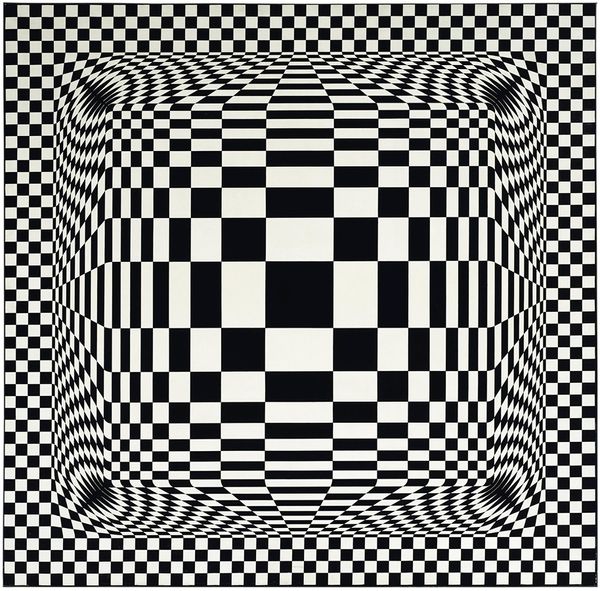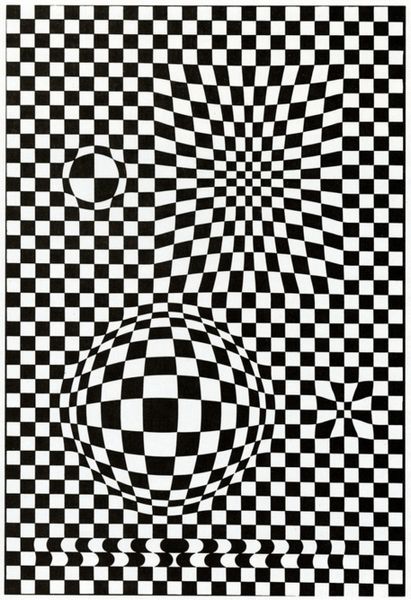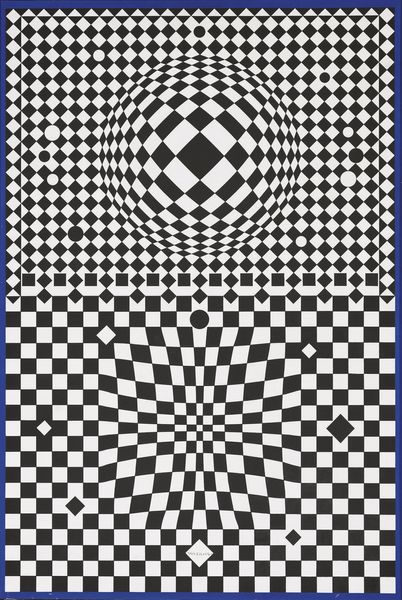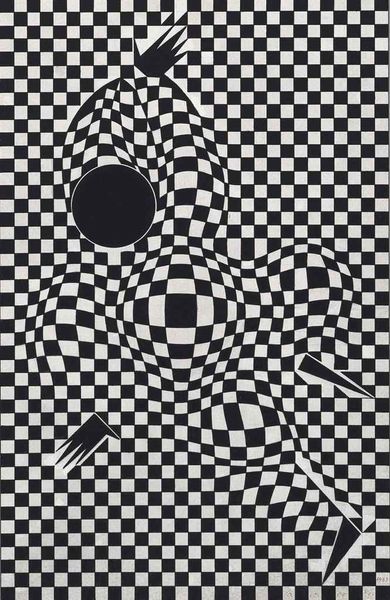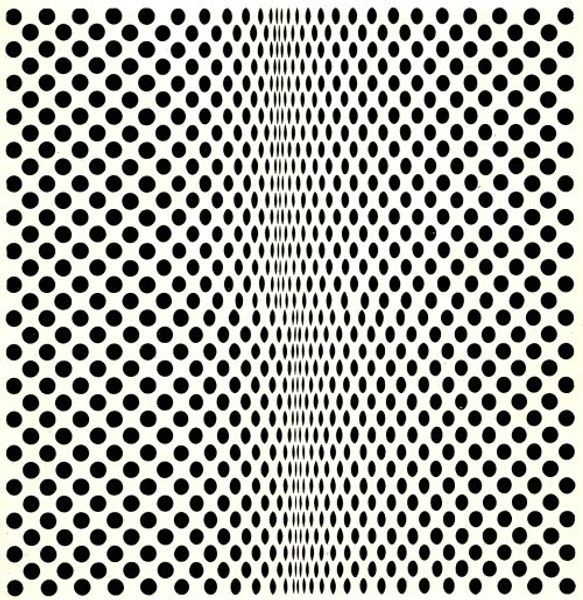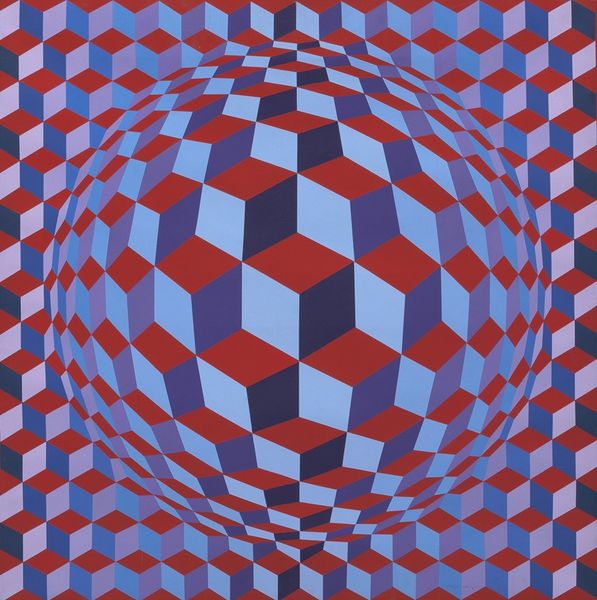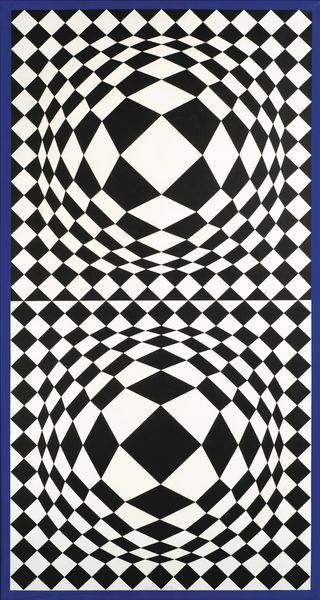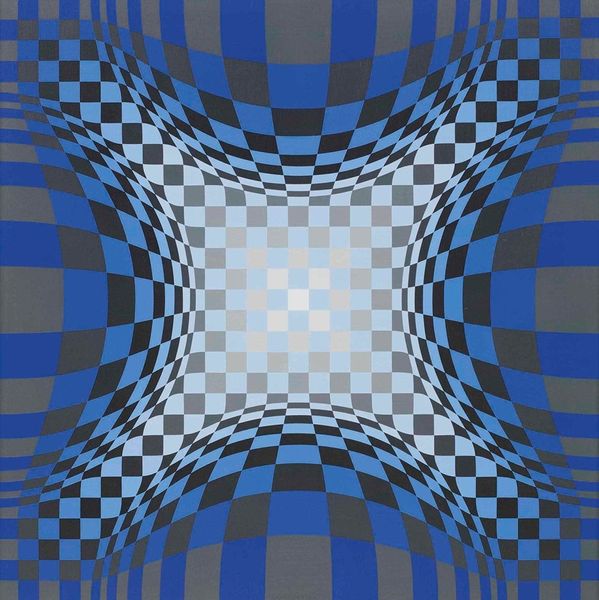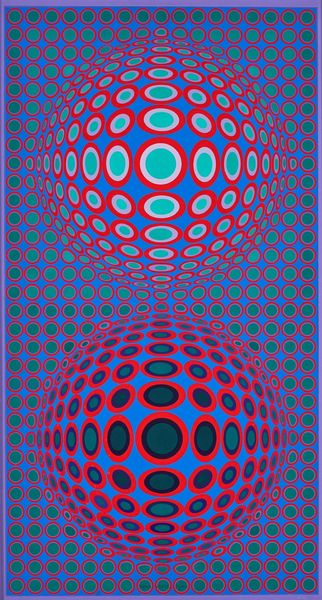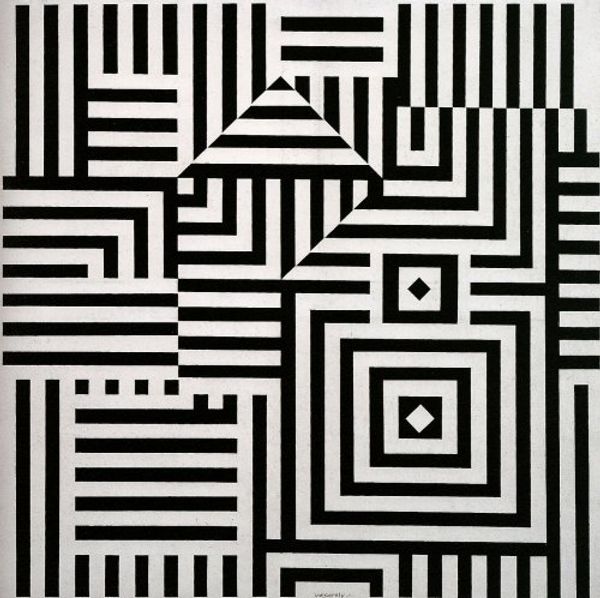
graphic-art, print
#
graphic-art
#
op-art
# print
#
geometric pattern
#
repetitive shape and pattern
#
organic pattern
#
geometric
#
geometric-abstraction
#
repetition of pattern
#
vertical pattern
#
abstraction
#
pattern repetition
#
layered pattern
#
funky pattern
#
combined pattern
#
repetitive pattern
Copyright: Modern Artists: Artvee
Curator: Here we have Victor Vasarely's "Paris-Tokyo #5" from 1980, a compelling example of graphic art within the Op Art movement. Editor: Wow, that's disorienting. The repeating checkerboard pattern creates this sensation of a bulging form coming right at you. It's unsettling and exciting all at once! Curator: Indeed. Vasarely's work in this period was deeply concerned with disrupting perception. He experimented with various techniques, including geometric abstraction, to achieve that visual dynamism, challenging traditional notions of what art should be. Editor: The choice of such a simple motif is fascinating. It’s almost like he’s tapping into some deep-seated human fascination with order and pattern. I mean, checkerboards evoke chessboards, ancient mosaics... it feels almost archetypal. Curator: Precisely! Think about how mass production played a role. Vasarely sought to democratize art through reproducible graphics, allowing wider accessibility. These pieces weren’t precious singular objects but items to be distributed. The name, “Paris-Tokyo” even suggests a global reach. Editor: I see a visual language being proposed, understood everywhere because of its inherent geometry. The black and white amplify the sense of disorientation by removing any softening effect color might offer. Curator: Color could distract from the illusion. Consider that this was done in the era of increasingly automated printing processes; the piece itself reflects that fascination with technology. Editor: So, this dizzying effect serves a purpose—to question our visual conditioning through pattern recognition and, on a symbolic level, to democratize high art through wider access, both material and visual? Curator: I think so. It shows us that even basic forms can generate potent aesthetic responses. Vasarely masterfully exploits this, creating not just images, but experiences. Editor: Seeing this, I'm reminded that the most effective illusions sometimes rely on the simplest of tools. Curator: Exactly, a potent blend of simple means to produce striking art.
Comments
No comments
Be the first to comment and join the conversation on the ultimate creative platform.
